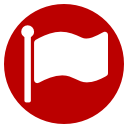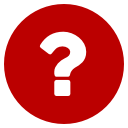Chapter 5: Bone
Chapter 5: Bone, Cartilage, and Joints
C. Premanandan
This chapter will cover bone, cartilage, and joints.
Chapter Learning Objectives
 By the end of this chapter, you should be able to do the following:
By the end of this chapter, you should be able to do the following:
- Define the components of bone on the microscopic level when bone is developing and when an animal is skeletally mature.
- Describe the function of bone
- Described the methods in which bone is formed.
- Classify the types of cartilage present in an animal.
- Describe the structure of each type of cartilage and list the locations where each is present.
- Describe the structure of tendons, ligaments and synovium.
Review Questions

By the end of this chapter, you should be able to answer the following:
- What are the major organic and inorganic constituents of bone?
- What are the structure and function of the following cell types:
- Osteoblast
- Osteocyte
- Osteoclast
- What are the anatomic structures that facilitates communication between osteocytes?
- Explain the basic process of osteoclastic resorption, naming one important stimulus for resorption?
- What is the difference between osteoid and bone?
- What is the difference between woven and lamellar bone?
- What is the difference between cancellous and compact bone?
- What is an osteon?
- What does the term modeling mean in term of bony tissue?
- What does the term remodeling mean in term of bony tissue? Compare and contrast remodeling and modeling
- List the fundamental processes in remodeling, in the proper sequence
- List two instances where bone remodeling plays an important role in NORMAL bone function
- What does the process of intramembranous ossification involve? Where does it occur?
- What does the process of endochondral ossification involve?
- Name sites where this occurs
- Explain the difference between a primary and secondary ossification center
- Define the articular epiphyseal complex
- List the three processes which are essential for endochondral ossification to occur normally
- What is the physis and the significance of this finding in a histologic section?
- What are the three types of cartilage and what locations can they be found?
- What are the predominant components of cartilage ground substance?
- What is the structure and function of the following:
- Chondroblast
- Chondrocyte
- Perichondrium
- Sharpey’s fiber
- Intervertebral disc
- Synovial membrane
